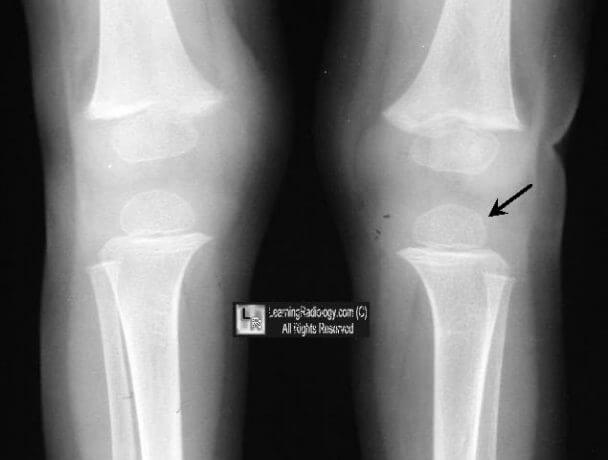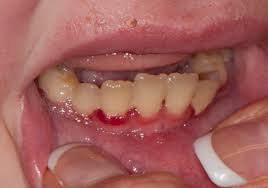How Does Vitamin C Deficiency Cause Scurvy?
Scurvy affects children mainly in developing countries. The cause of scurvy is a deficiency of Vitamin C. This vitamin c deficiency occurs from abnormal dietary habits, mental disabilities, and physical disabilities. Scurvy in children can be prevented. Children and infants need from 100-mg -300mg a day of Vitamin C
Scurvy Overview
Severe vitamin C deficiency causes scurvy, a disease that is mainly associated with long sea voyages and naval expeditions until the 19th century.
Scurvy manifests itself 2-3 months after consuming a diet lacking vitamin c; it is characterized by multiple hemorrhages and, left untreated, is fatal.
In the past decade, several refugee populations that were wholly dependent on food aid have developed scurvy.
Scurvy is Prevented by Eating Adequate Vitamin C
Scurvy is caused by a severe prolonged deficiency of Vitamin C deficiency. Because scurvy is so rare, scurvy is seldom suspected in children, which leads to a delay in the diagnosis of the disease.
Children who have poor dietary habits, mental illnesses, or physical disabilities are more prone to develop scurvy.
Scurvy is a disease that played an important role in history and used to be the number one killer of sailors. Nowadays, scurvy is not a common diagnosis in the developed world. It is still diagnosed in third-world countries because of malnutrition and in refugee camps.
Symptoms of Scurvy
- Skin problems
- Bone problems
- Dental problems
- Hematomas
Scurvy is diagnosed by doing a complete history and x-rays of the arms and legs. Scurvy is caused by a chronic deficiency of vitamin C. When scurvy is diagnosed early, the outcome of very favorable.
Why Do We Need Vitamin C
Vitamin C is an essential nutrient for humans. We need vitamin C to help support connective tissues, bones, and collagen.
Vitamin C is a co-factor in several processes in the body including the formation of collagen, conversion of folic acid, and other hormones in the human body. Vitamin C is an antioxidant, and it has the ability to stabilize other nutrients including Vitamin E and folic acid.
Vitamin C also makes the body absorbed iron more efficiently.
Vitamin C plays a role in the anti-inflammatory processes by regulating steroids. Vitamin C supplementation in the form of fruits, vegetables, and dietary supplements are essential for humans.

Dietary Forms Of Vitamin C and Sources of Vitamin C To Prevent Scurvy
Children who are breastfeeding should get the required amount of Vitamin C from their mothers unless the mother is deficient. However, children and teens get adequate Vitamin C from a healthy diet. Vitamin C is a water-soluble vitamin that is absorbed from the gastrointestinal tract.
Any excess Vitamin C is expelled in the urine. The recommended RDA of Vitamin C for children is 15-45 mg for the ages of 1-13 years. For the ages of 14-18 years, the RDA is 65-75 mg per day.
Infant babies Vitamin C levels are related to the mother’s nutritional status. Vitamin C is transported directly to the growing baby via the placenta.
Best Sources of Vitamin C to Prevent Scurvy
- Citrus fruits
- Oranges and lemons
- Limes and grapefruits
- Melons and vegetables
- Spinach and lettuce
- Human milk is richer in Vitamin C than cows milk is
- Brussels sprouts and red peppers
Clinical Features of Scurvy
It takes almost 12 weeks of inadequate intake of Vitamin C to have symptoms. The initial symptoms of Vitamin C are the following in children:
- Irritability
- Loss of appetite
- Low-grade fever
If Vitamin C deficiency is not corrected, the following symptoms will occur in children:
- Bruising
- Hyperkeratosis
- Bleeding
- Swollen and bleeding gums
- Poor teeth formation
- Bone disease
- Brittle bones
- Leg swelling
- Infants may have pseudo-paralysis
- Children will take on a “frog” position
- Anemia
- Iron deficiency secondary to decreased absorption of iron
- Nose bleeding

What Does the Xray’s Look LIke In Scurvy and Pictures of Xrays
The changes in scurvy occur at the distal end of the long bones. These changes are usually seen commonly at the knees and ankle. Osteopenia or bone loss is seen on Xray with Vitamin C deficiency in children. Fragile and brittle bones fracture and they are easily seen on Xray.
How is Scurvy Diagnosed?
Scurvy is suspected when the “4 H’s” are present: Hemorrhage, hyperkeratosis, hypochondriac, and hematologic abnormalities.
A thorough clinical history and examination, along with X-ray studies will lead a provider toward a diagnosis of scurvy.
Many children present with various signs and symptoms, therefore, it is often hard to come up with a diagnosis right away.
Many children are easily diagnosed when oral symptoms occur such as bleeding gums, swollen gums, and loose teeth.
A low blood level of Vitamin C less than 0.2 mg/dl is usually considered deficient. However, the levels may be wrong; especially if there has been recent Vitamin C supplementation.
The diagnosis of scurvy is made when there is a low intake of Vitamin C. Scurvy can also occur with other nutritional deficiencies such as:
- Thiamine deficiency
- B6 deficiency
- B12 deficiency
- Vitamin D deficiency
An MRI is done because scurvy in the bones looks like a malignancy. The marrow changes that occur in leukemia mimics the changes that scurvy cause.
Scurvy treatment Vitamin C
Infants and children are treated with Vitamin C 100mg -300mg daily for one month or until full recovery occurs. The first symptoms to go away are the oral symptoms and bleeding. The bone abnormalities and the dermatologic symptoms take weeks to go away.
Scurvy Statistics
According to the CDC, there are less than 20,000 cases of scurvy per year in the United States. However, in certain refugee camps in Somalia, the rate is as high as 40%. The reasons for the refugee cases are:
- Populations of refugees go without food for extended amounts of time
- Refugees do not have access to fresh fruits and vegetables
- There are no land resources to grow food
- Infectious diseases spread quickly that require a lot of vitamin C
- Increased risk among older persons and among women of reproductive age, especially if
pregnant. - The dry season has the highest rates of scurvy
Conclusion
Scurvy is a preventable disease. The governments of affected countries need to provide adequate nutritional education and improve the skill levels of the workers to ensure that they are able to quickly recognize the signs and symptoms of scurvy.
My name is Phyllis Robinson MSN, RN. I have been a Registered Nurse for 27 years in the Cardiac Intensive Care Unit. I am passionate about cardiac care and heart disease. I also want this blog to be an educational tool that people can refer to for traditional and alternative treatment. I will blog on heart disorders such as high blood pressure, congestive heart failure, cardiomyopathy, and high cholesterol.
I received my Nursing degree from Baltimore Community College.
I went on to receive my Masters in Nursing from Walden University
I have worked for almost 30 years in Critical Care with a focus on heart health. I am an advocate of preventive healthcare.







Thank you for this informative article, Phyllis. I now understand that many of the symptoms my parents had in their later years could have been caused by scurvy. I didn’t realize that scurvy can also be caused by a deficiency of other vitamins, so that was useful information. We tend to think that our modern diets contain enough vitamins and minerals for good health. It is clear to me that is not the case.
I appreciate your creating this blog. All the best!